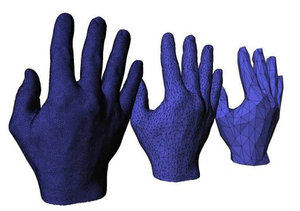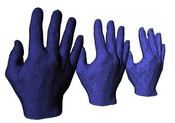Information
- Publication Type: Master Thesis
- Workgroup(s)/Project(s):
- Date: March 2011
- TU Wien Library:
- First Supervisor:
Abstract
Representing huge triangular datasets in a real-time rendering environment is a challenge receiving continuous attention. There is a growing complexity of geometric meshes on the one hand and increasing computational power of graphics hardware on the other hand. Although hardware acceleration is very powerful, simplification using software is much cheaper and more flexible. Additionally, for a large class of geometric models, simplification can be performed as a preprocessing step that does not need to run in real-time. The underlying theory of this diploma thesis is based on mesh simplification using quadric error metrics. This algorithm was first published by Michael Garland. It was implemented into Aardvark, a sophisticated rendering framework. It contains a comprehensive set of libraries dealing with data structures in general and polygonal mesh data structures in particular. The application takes a triangulated mesh as input and iteratively creates a more and more simplified approximation by weighting and collapsing suitable mesh areas. Some surface details will be lost, but the overall shape of the model will be preserved. The presented code can handle models by preprocessing static, closed triangular meshes. The iterative computation stops if an user specified percentage of the original mesh size is reached. A further improvement in a later research project will try to add vertex colors and texture coordinates to the simplification procedure.Additional Files and Images
Weblinks
No further information available.BibTeX
@mastersthesis{NK_2011,
title = "Weighted Mesh Simplification of 3D Triangular Surfaces",
author = "Norbert Ketterl",
year = "2011",
abstract = "Representing huge triangular datasets in a real-time
rendering environment is a challenge receiving continuous
attention. There is a growing complexity of geometric
meshes on the one hand and increasing computational power
of graphics hardware on the other hand. Although hardware
acceleration is very powerful, simplification using software
is much cheaper and more flexible. Additionally, for a
large class of geometric models, simplification can be
performed as a preprocessing step that does not need to run
in real-time. The underlying theory of this diploma thesis
is based on mesh simplification using quadric error
metrics. This algorithm was first published by Michael
Garland. It was implemented into Aardvark, a sophisticated
rendering framework. It contains a comprehensive set of
libraries dealing with data structures in general and
polygonal mesh data structures in particular. The
application takes a triangulated mesh as input and
iteratively creates a more and more simplified
approximation by weighting and collapsing suitable mesh
areas. Some surface details will be lost, but the overall
shape of the model will be preserved. The presented code can
handle models by preprocessing static, closed triangular
meshes. The iterative computation stops if an user
specified percentage of the original mesh size is reached.
A further improvement in a later research project will try
to add vertex colors and texture coordinates to the
simplification procedure.",
month = mar,
address = "Favoritenstrasse 9-11/E193-02, A-1040 Vienna, Austria",
school = "Institute of Computer Graphics and Algorithms, Vienna
University of Technology ",
URL = "https://www.cg.tuwien.ac.at/research/publications/2011/NK_2011/",
}

 Poster
Poster Thesis
Thesis


